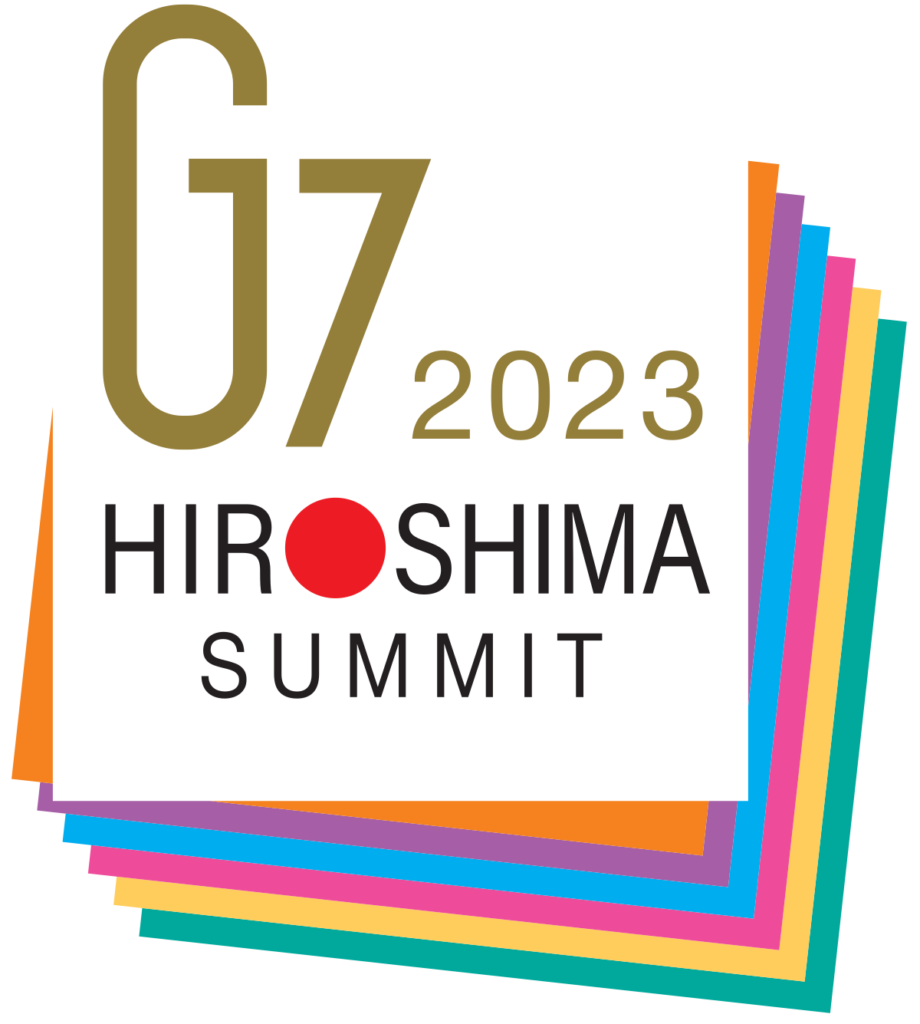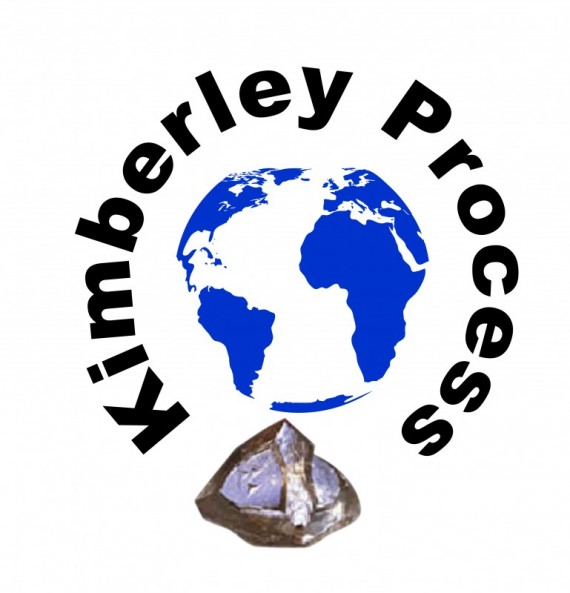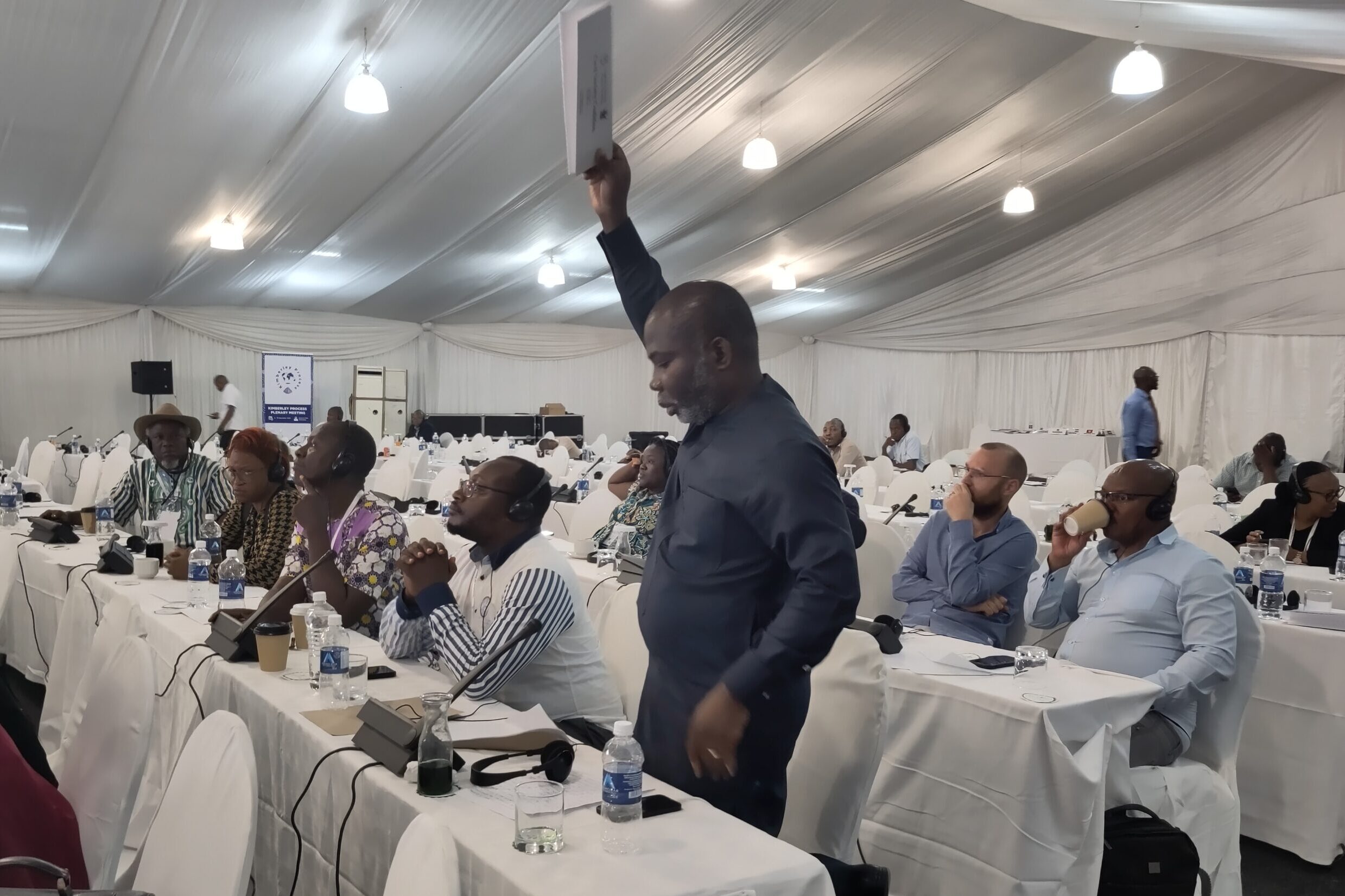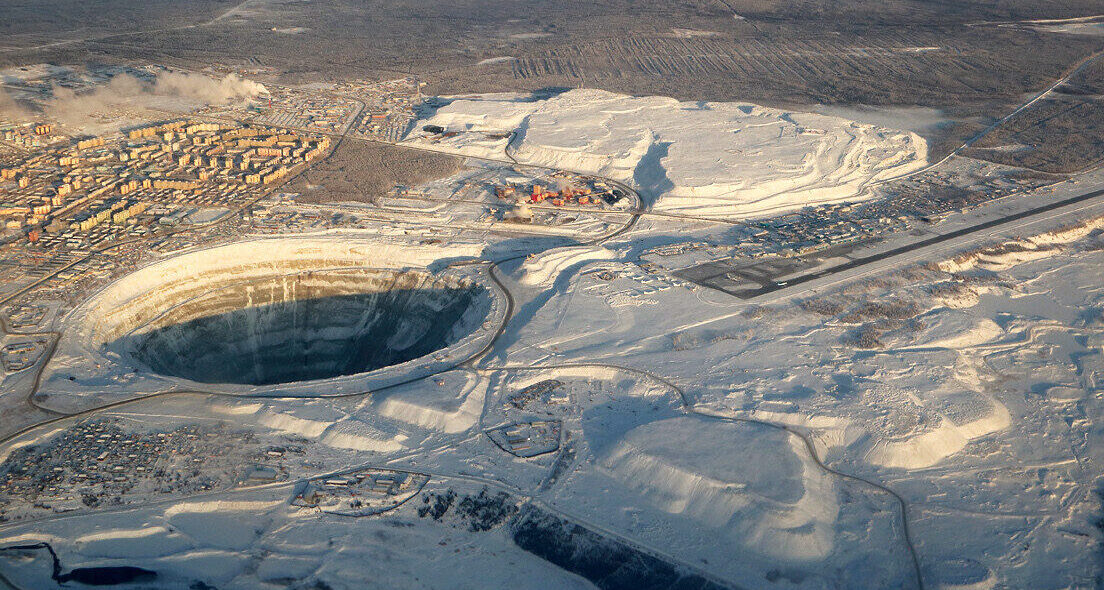The diamond trade is today faced with arguably the biggest crisis since the blood diamond controversy of the late 1990s. Once again this has to do with widespread concern that proceeds from mining and trading this precious symbol of eternal love are being used to finance conflict. This time the source of controversy are Russian diamonds, which represent about one third of the global production, and generate substantial revenues that contribute to financing Russia’s war against Ukraine.
The G7’s seismic shift

After nearly one year of contemplating, strategizing, and wrangling, the G7 launched coordinated sanctions against Russian diamonds as of January 1st, 2024. In an effort to avoid circumvention, these sanctions will be accompanied by a traceability-based diamond verification and certification mechanism that will be phased in from March 1st, 2024. While many questions about this scheme remain to be answered, the EU has shortly before the year’s end lifted some of the veil.
In what is likely to cause a seismic shift in the modus operandi of the diamond trade, the EU announced that all rough diamonds above 0.5 carats will, by September 2024, have to be registered on a block-chain based ledger to ensure traceability from ‘the mine to the finger’. Quite crucially, however, the EU and US are allegedly not yet aligned on how to ensure traceability after rough diamonds are cut and polished, which happens in India for over 90% of the world’s diamonds.
The bulk of the control effort will probably rest on the EU, which has with Antwerp the only major rough diamond trading center of the G7. The EU assigns the Belgian Federal Public Service of Economy at the Antwerp Diamond Office as the authority responsible for verification. Depending on the precise modalities, this will likely require – at minimum in the early phases – the rerouting of a substantial share of global diamond production through Belgium. This would be another drastic change to the diamond supply chain, as currently many diamonds from African producer countries enter the international market through Dubai.
Don’t mention the Kimberley Process
G7 members, in their announcements, don’t mention that a scheme for rough diamond certification already exists for over 20 years, namely the Kimberley Process (KP). This scheme, in which they all participate, is not a traceability mechanism. It certifies individual shipments with no effort to establish traceability across the rough diamond supply chain. Yet, it is mandated by the United Nations to break the links between the diamond trade and conflict. Despite this silence, a large part of the G7’s motivation arguably results from the KP’s failings.
25 years ago, in the aftermath of the previous East-West confrontation of the Cold War, alarm bells were sounding over how the diamond trade was fueling a number of deadly civil wars on the African continent. Civil society, media, and United Nations reports revealed how profits from the international trade in diamonds were used by warlords and rebel groups in Angola, Sierra Leone, Liberia, and the Democratic Republic of Congo, to buy arms and finance violent campaigns against government forces.

Driven by complementary motivations to prevent conflict and protect consumer confidence, governments, industry, and civil society joined forces in 2000 in what became known as the Kimberley Process. Following three years of tough negotiations they reached consensus on a rough diamond certification scheme (KPCS) with a very specific focus. This consisted of preventing the trade in conflict diamonds, which the KP defined as ‘diamonds financing rebel groups that seek to overthrow legitimate governments’. Participating countries basically committed to only trading rough diamonds with other KP participants, in tamper-proof containers accompanied by a KP certificate guaranteeing their conflict-free origin. They moreover agreed to share progress reports and import/export statistics and periodically invite peer review visits.
The rise and demise of the KP
As part of the compromise, other key aspects were left to figure out later. However, these ended up never being genuinely addressed as momentum faded. Another reason is that the KP’s decision-making model, where governments decide by consensus in strictly confidential meetings where industry and civil society are mere observers, is strongly biased towards the status quo.
In the past 20 years, the KP has proven its value as a tripartite discussion forum and with its valuable exchange of statistics. However, as reform cycle upon reform cycle failed to produce much meaningful change, the KPCS’s long-standing loopholes were left unaddressed. In a nutshell (for a more elaborate analysis see this IPIS report chapter) these loopholes include:
- The widespread use of KP mixed origin certificates for shipments that contain diamonds from more than one producer country (in 2023 such certificates accompanied over 65% of the global rough diamond trade volume). This undermines traceability and is prone to abuse to launder diamonds of dubious origin into the legal trade;
- Similarly, the limited application of the scheme to rough diamonds only allows to hide the origin of diamonds through cutting and polishing;
- The very minimal requirements of governments to ensure in-country traceability and control against smuggling; and
- The permissive peer review system that fails to hold countries accountable for shortcomings.
Furthermore, the constantly changing nature of conflict renders the KP’s narrow conflict diamond definition increasingly irrelevant. In recent years, abuses and violence associated with diamond mining, which are fortunately the exception rather than the rule, have mostly been caused by government forces and private security companies guarding industrial diamond mining concessions. Nonetheless, even in the ongoing round of KP discussions on broadening the conflict diamond definition, any proposal on including violations by governmental actors is immediately blocked by a large majority of member countries.
Consequently, the KP certification scheme is today leaking like a sieve. Even in the Central African Republic, the only country that is still subject to a partial KP embargo, one may wonder whether the KP effectively stops any conflict diamonds from eventually making it to the consumer market. The embargo incentivizes smuggling and creates a fertile ground for criminal networks, and recently also Russia’s Wagner mercenaries, to exploit the certification scheme’s many vulnerabilities.
The weaknesses of the KPCS are long known and have been called out for years by civil society, industry actors and – mainly Western – governments. However, the large majority of KP members still feels too comfortable in the status quo. With little effort required, this maintains consumer confidence with the false premise that the KP assures that 99,8% of diamonds are conflict-free.
It’s not just about the money
While the narrow scope of the KPCS used to be an undesirable but acceptable deficiency for Western governments, it poses today a more existential problem. The fact that they are investing considerable time and resources in a scheme that marks huge volumes of Russian diamonds as conflict-free is making them particularly uncomfortable. Yet, they are isolated on this issue within the KP. Even the simple tabling of a discussion on the Russia-Ukraine war has been blocked in every KP meeting since the invasion. The realization that any KP action against Russian diamonds is unlikely, and that abandoning the KP risks to isolate them even more, led G7 countries to develop a different approach.
Russia’s diamond mining industry generates around €4.3 billion in revenues every year. This is substantial but does in itself probably not justify all the effort put into the G7 sanction scheme. Besides the West’s unease with the KP, at least two other motivations are at play. One is symbolical. It became increasingly difficult to justify, particularly in Europe, why people must cope with all kinds of price increases on essential goods subject to sanctions, while a Russian non-essential luxury product like diamonds is being spared. A second key motivation is safeguarding consumer confidence in diamonds. Major jewelry brands have been trying to assure consumers that they are not selling them Russian blood diamonds. Yet, there are strong doubts about whether they can substantiate such assurances. This risks undermining trust in the entire industry.
Caught unprepared
The problem is that the trade’s strong reliance on the KP made governments and industry ill-prepared for this crisis. Not only has reform within the KP been blocked for years, its existence also hampered progress on responsible sourcing standards outside its purview. Most notably, the diamond industry was for years absent in the annual fora discussing progress on advancing the OECD Due Diligence Guidance for Responsible Supply Chains of Minerals from Conflict-Affected and High-Risk Areas. Nearly a decade ago, an attempt to develop a Diamond Supplement to the OECD Guidance, as exists to tackle unique supply chain challenges of other conflict minerals like gold, was stopped by the then KP Chair, with the argument that the KP had this covered. This anecdote has long been symptomatic of the diamond trade’s alienation from broader due diligence efforts.
In recent years, major companies started catching up, but this did not advance enough to cushion the blow of the Russian diamond controversy. Major diamond industry associations went into crisis mode, including the Responsible Jewellery Council (RJC), the Natural Diamond Council (NDC) and the World Diamond Council (WDC). The Russian mining giant Alrosa had a seat on the board of all these associations, despite its close ties to the Kremlin and links with the military. For years Alrosa had been openly writing in company newsletters that it sponsors a submarine in the Russian Black Sea fleet that, for instance, contributed to the conquering of Crimea in 2014. This arguably did not raise red flags because of the insufficient advancement on key due diligence requirements, such as transparency and serious company audits. This also explains why these associations had no established procedures to act upon breaches of their own codes or principles by (board) members.
The G7’s traceability scheme offers an opportunity to catch up on the advancement towards transparency in the traditionally opaque diamond trade. This would allow to streamline the unnecessarily complex supply chain where countless middlemen reduce profit margins and skim revenues that should be flowing back to – mainly African – producer countries. The extent to which the G7 scheme can realize this potential will depend on the many technical aspects that are still to be sorted out. These will determine whether it becomes a paper tiger with technology requirements that are just a new business opportunity, or an effective tool in draining the financial flows to the Kremlin. Its potential to shuffle the cards in the industry and create new winners and losers explains the heavy lobbying and also the backlash, not rarely by those who have little to gain from advanced transparency.
Embedding the G7 scheme in a broader due diligence framework
As with the KP, the narrow scope of the G7 scheme is arguably its weakest spot. Its design is informed predominantly by the objective to hurt Russia economically and is not embedded in a broader due diligence framework with a long-term vision. This is not only a missed opportunity but also risks backfiring on the G7. This is particularly evident in the relation with African producer countries.
The November 2023 KP Plenary meeting was a reality check in this regard. The African Diamond Producers Association (ADPA) accused the G7 of holding the KP hostage over geopolitical issues. More generally, African producer countries lamented they were excluded from the G7 process and expressed concern that this new scheme would harm their diamond sectors. The initial response of G7 representatives was that African producers should not worry as this initiative is purely about Russia and in no way concerns them. This, however, appeared to underestimate the potential implications of this new sector-wide certification scheme that will undoubtedly create new opportunities, but also challenges, across the supply chain.
The lack of serious and proactive engagement also created an easy void for Russia to exploit and frame the G7 initiative as purely serving “the spread of harsh practices of ‘wild capitalism’ with unpredictable consequences”, putting at stake “the prosperity and well-being of the countries of the global South”. This appears to have served as a wake-up call to the G7 that explicitly committed, in its December Leaders’ Statement, to consultations with producing countries on traceability measures.
A second risk for the G7 to mitigate is the impact on the – predominantly African – artisanal and small-scale mining (ASM) sector, which is estimated to account for 10-20% of the global diamond production volume. A dedicated strategy is needed to ensure that the technology and traceability challenges posed by the scheme do not result in the exclusion or marginalization of ASM diamonds. This implicates both the design of the certification scheme and the management of unintended side effects. As with other minerals, enhanced traceability could lead traders to de-risk by not sourcing from countries with large artisanal mining sectors, which provide livelihoods to millions but also pose higher challenges of risk mitigation. Dedicated outreach, technical assistance, and support programs will be key to countering the perceived and real challenges the G7 scheme poses for African producer countries.
Further reading



All articles and other news items referenced in this briefing come from third party media sources. Not being the author, IPIS is not responsible for the content of the news items or articles contained or referred to in this briefing.


